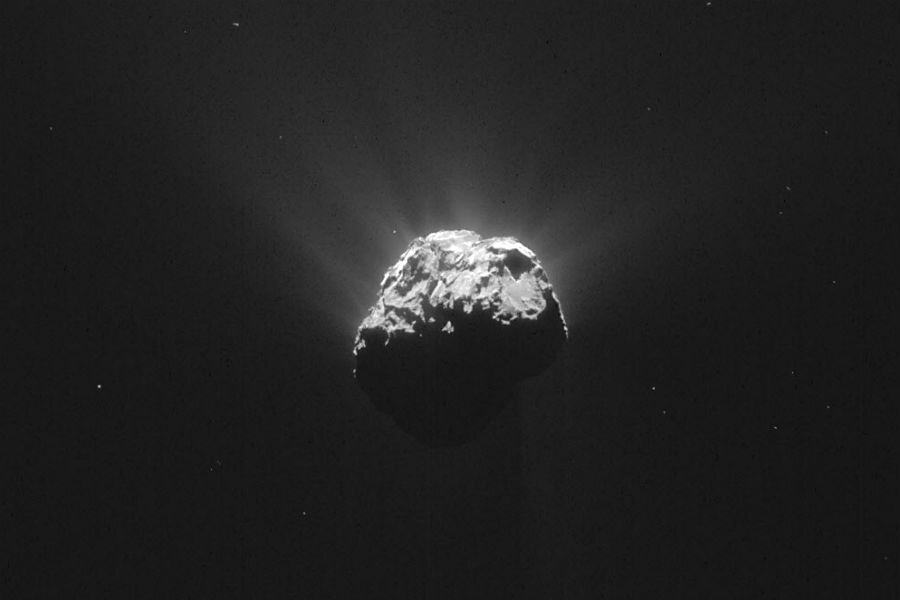Did alien microbes carve odd features on Rosetta comet?
Leading astronomers have put forth a startling explanation for the distinctive features found on Comet 67P/Churyumov-Gerasimenko: the comet's activity was shaped by microorganisms.
For the past eleven months, the European Space Agency's Rosetta spacecraft has been orbiting the oddly shaped comet. So far, scientists retrieving data from the space probe have made several discoveries that have helped us better understand how comets work, such as the origins of its giant dynamic sinkholes, the composition of comet dust, and what happens when 67P/Churyumov-Gerasimenko is warmed by the sun.
And perhaps this mission could ultimately play a role in the discovery of extraterrestrial life.
Speaking at the Royal Astronomical Society’s National Astronomy Meeting in Wales on Monday, astrobiologists Max Wallis of the University of Cardiff and Chandra Wickramasinghe of the Buckingham Centre for Astrobiology argue that certain features of the comet, such as its organic-rich black crust, are best explained by abundant microbial alien life living beneath its icy surface. Rosetta is also said to have picked up mysterious clusters of organic material resembling viral particles.
Neither Rosetta nor its probe, Philae – which made history as the first lander to touch down on a comet's surface in November 2014 – are equipped to search for evidence of alien life. The inclusion of the necessary equipment was proposed prior to the spacecraft's launch in 2004, but was ultimately rejected.
Now, some astronomers are saying 67P/Churyumov-Gerasimenko and other comets could be home to living microbes similar to the “extremophiles” that inhabit Earth's most inhospitable conditions. They argue that these comets may have contributed to the presence of life on Earth and possibly other planets such as Mars.
Computer simulations suggest microbes could inhabit the comet's watery regions. Organisms that contain antifreeze salts could be active at temperatures as low as 40 degrees below zero, researchers say.
Comet 67P/Churyumov-Gerasimenko has a black hydrocarbon crust overlaying ice, smooth icy “seas,” and flat-bottomed craters that hold lakes of re-frozen water containing organic debris. Dr. Wickramasinghe told The Guardian that research seems to point to “micro-organisms being involved in the formation of the icy structures, the preponderance of aromatic hydrocarbons, and the very dark surface”.
Wickramasinghe, who was involved in the mission planning 15 years ago, says that people should be more open to the possibility of real-life aliens.
“Five hundred years ago it was a struggle to have people accept that the Earth was not the centre of the universe," he said. "After that revolution our thinking has remained Earth-centred in relation to life and biology. It’s deeply ingrained in our scientific culture and it will take a lot of evidence to kick it over.”
Rosetta's findings have demonstrated that the "comet is not to be seen as a deep-frozen inactive body" but one that "supports geological processes and could be more hospitable to micro-life than our Arctic and Antarctic regions," Wickramsinghe's colleague Dr. Wallis told The Independent.
Dr. Wallis will present their findings to the Royal Astronomical Society’s National Astronomy Meeting in Wales today.







